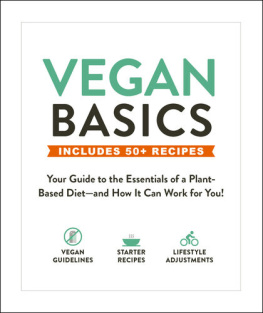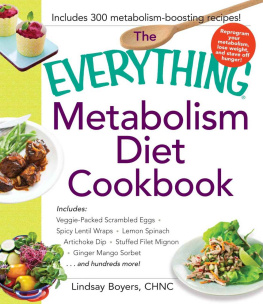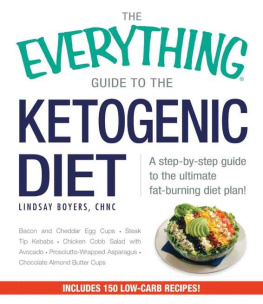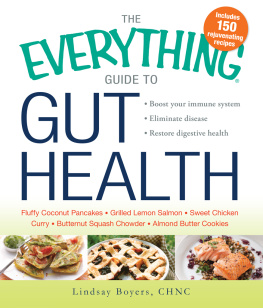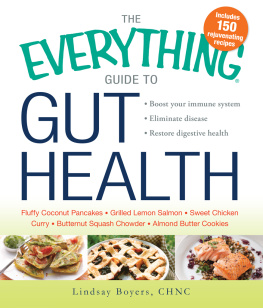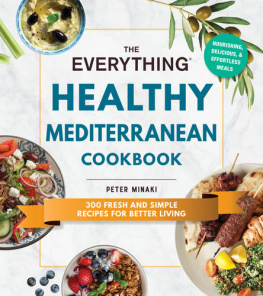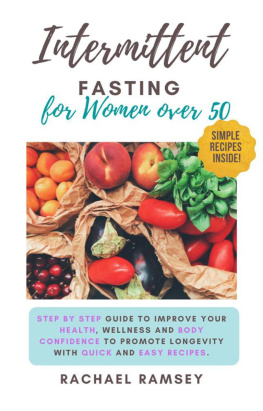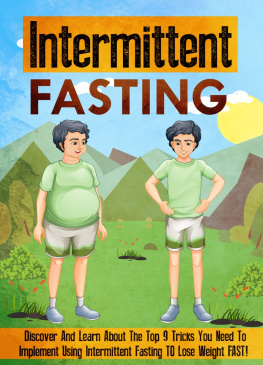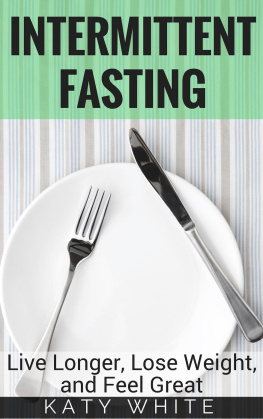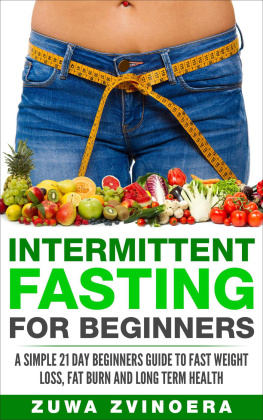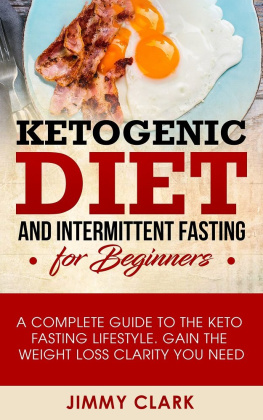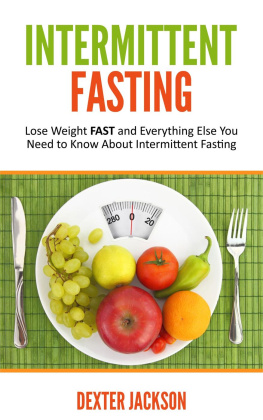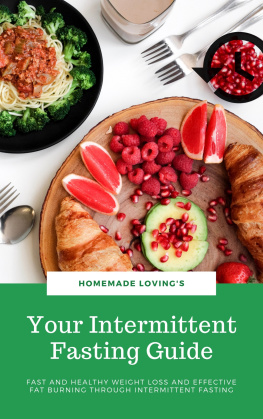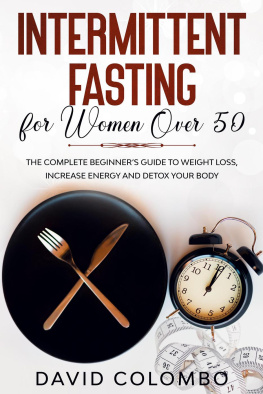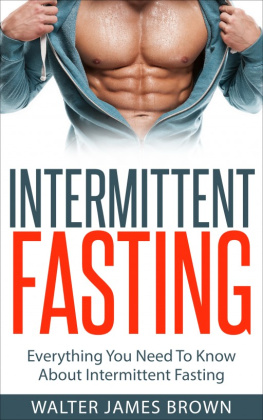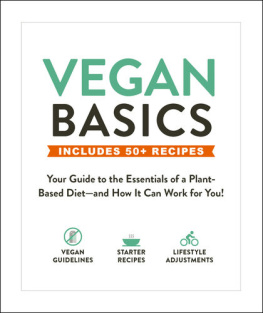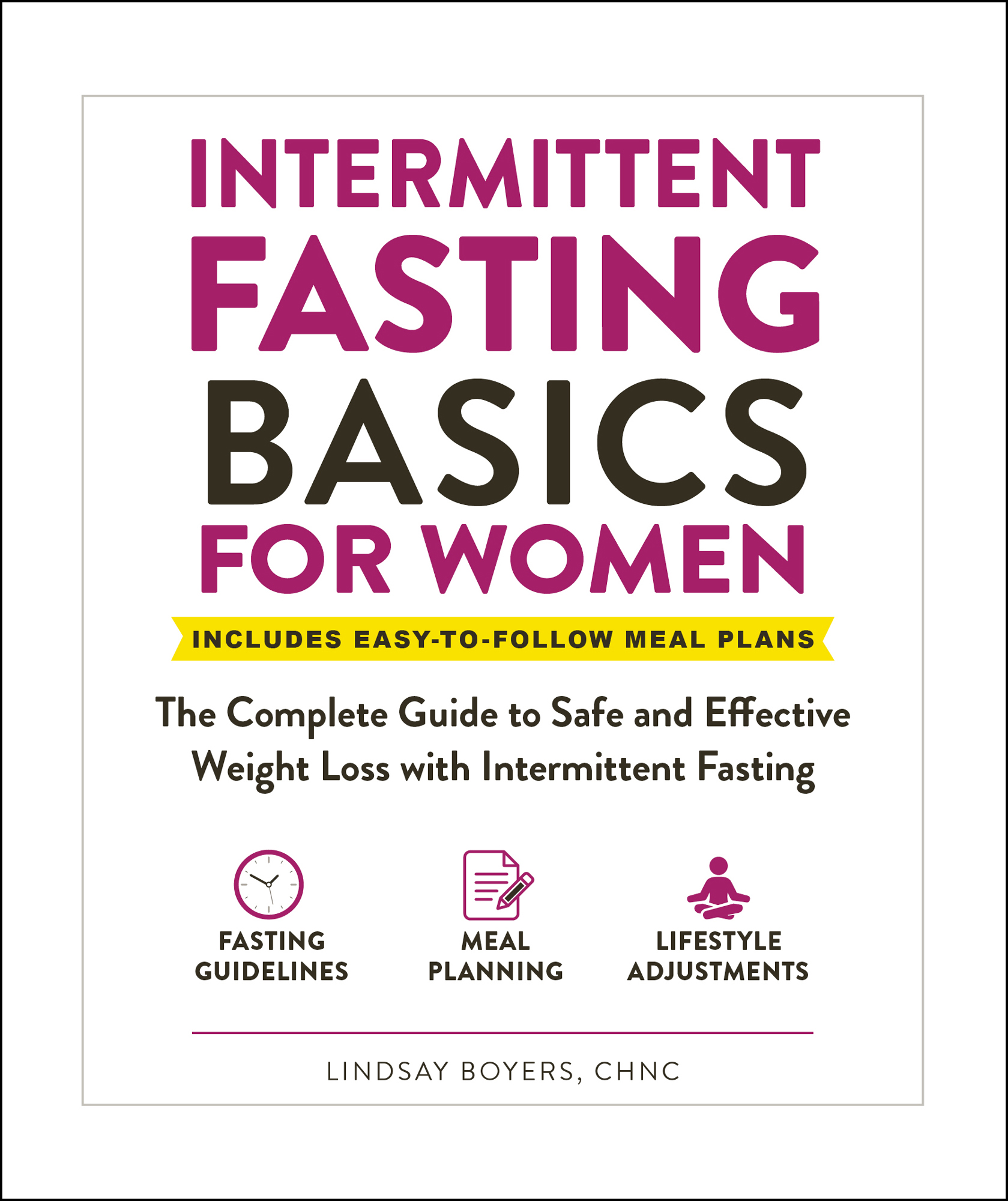
Intermittent Fasting Basics for Women
Includes Easy-To-Follow Meal Plans
The Complete Guide to Safe and Effective Weight Loss with Intermittent Fasting
Fasting Guidelines
Meal Planning
Lifestyle Adjustments
Lindsay Boyers, Chnc

Adams Media
An Imprint of Simon & Schuster, Inc.
57 Littlefield Street
Avon, Massachusetts 02322
www.SimonandSchuster.com
Copyright 2021 by Simon & Schuster, Inc.
All rights reserved, including the right to reproduce this book or portions thereof in any form whatsoever. For information address Adams Media Subsidiary Rights Department, 1230 Avenue of the Americas, New York, NY 10020.
First Adams Media trade paperback edition April 2021
ADAMS MEDIA and colophon are trademarks of Simon & Schuster.
For information about special discounts for bulk purchases, please contact Simon & Schuster Special Sales at 1-866-506-1949 or .
The Simon & Schuster Speakers Bureau can bring authors to your live event. For more information or to book an event contact the Simon & Schuster Speakers Bureau at 1-866-248-3049 or visit our website at www.simonspeakers.com.
Cover and interior images Getty Images
Cover design by Michelle Kelly
Library of Congress Cataloging-in-Publication Data has been applied for.
ISBN 978-1-5072-1570-8
ISBN 978-1-5072-1571-5 (ebook)
Many of the designations used by manufacturers and sellers to distinguish their products are claimed as trademarks. Where those designations appear in this book and Simon & Schuster, Inc., was aware of a trademark claim, the designations have been printed with initial capital letters.
The information in this book should not be used for diagnosing or treating any health problem. Not all diet and exercise plans suit everyone. You should always consult a trained medical professional before starting a diet, taking any form of medication, or embarking on any fitness or weight training program. The author and publisher disclaim any liability arising directly or indirectly from the use of this book.
Always follow safety and commonsense cooking protocols while using kitchen utensils, operating ovens and stoves, and handling uncooked food. If children are assisting in the preparation of any recipe, they should always be supervised by an adult.
Introduction
You may have heard about the health benefits of fasting. Not only does it help you shed stubborn pounds; it also increases energy, reduces inflammation, and may even reduce your risk of heart disease (the leading cause of death in women in the United States). But where do you begin?
With the basics. Intermittent Fasting Basics for Women teaches you everything you need to know about fasting as a woman, in a quick, easy-to-understand way. Not sure how exactly intermittent fasting works? Youll learn about the mechanisms of autophagy, as well as the truth behind common misunderstandings about starvation mode, cutting carbohydrates, and more. Wondering about the differences between fasting for men versus for women? Youll uncover the unique factors that impact your body and how it reacts to fasting, from your hormones to the effects of stressand why women are especially susceptible to these effects.
Unsure of which fasting approach is right for you? This book explores each of the fasting schedules recommended for women, as well as various meal plans you may work your fasting routine into, including keto and vegan plans. Plus, each meal plan includes easy recipes to help you reap the full benefits and stick to your fasting schedule.
Whether youre brand-new to intermittent fasting, or youve tried it before but havent had much success, this book is here to help you apply this lifestyle to your unique needseasily and effectively.
Intermittent Fasting Basics
You may be hearing a lot about intermittent fasting recently, but its not new. In fact, one of the oldest known scientific studies on intermittent fasting dates back seventy-five years! And the concept as a whole goes back even further to the days of hunting and gatheringeven if your ancestors werent doing it on purpose. Intermittent fasting has stood the test of time because it isnt just another diet. Its a powerful eating strategy that has profound effects when done correctly. While intermittent fasting can certainly help you lose weight, its health benefits go way beyond that. It can also increase your energy, improve your concentration, reduce puffiness and inflammation, and help protect youand your brainfrom various chronic diseases.
Theres some confusion surrounding intermittent fasting, though. Some people think its just a fancy way of restricting calories, but its so much more than that. In this chapter, youll learn the basics of intermittent fasting and why its so powerful. Youll also discover the difference between intermittent fasting and calorie restriction and why you should kick low-calorie diets to the curb forever.
What Is Intermittent Fasting?
Intermittent fasting is a nonspecific term for cycling between periods of fasting and eating. There are several types of intermittent fasting, but they all share one major commonality: Instead of focusing primarily on what you eat, you pay more attention to when you eat (although that doesnt mean the quality of your diet isnt also important).
According to Dr. Mark Mattson, a researcher on intermittent fasting and professor of neuroscience at Johns Hopkins University, the human body is designed to go without food for several hours to several days, but after the Industrial Revolution, food became accessible all the time. As a result, the human diet changed significantly, and biology hasnt caught up yet. People are eating more food more often, and these extra calories (coupled with sedentary lifestyles) have led to chronic health issues like obesity, type 2 diabetes, and heart disease, which is the leading cause of death for women in the United States.
When you go for set periods of time without food, it allows your body to properly focus on digestion and deplete your energyor glucosestores so that your metabolism is forced to start burning your own body fat. Mattson defines this process as metabolic switching. Keep in mind that body fat is just excessive food energy thats been stored; if you continue to eat more than you need, that excess energy has to find somewhere to go, and body fat will continue to increase. On the other hand, when you fast, your body turns to its own fat for an energy source.
The Fed State
The fed state, also called the absorptive stage, occurs right after you eat a meal or snack. As soon as you eat, your body starts to work on breaking down the food and absorbing the nutrients from it. Components of this digested material enter your blood, causing blood glucose levels to rise. The rise of glucose then triggers the beta cells in your pancreas to release insulin, which binds to receptors in your cells, stimulating them to open and let glucose in. Once glucose is inside your cells, three things happen:
- Its used as a direct source of energy by your cells.

